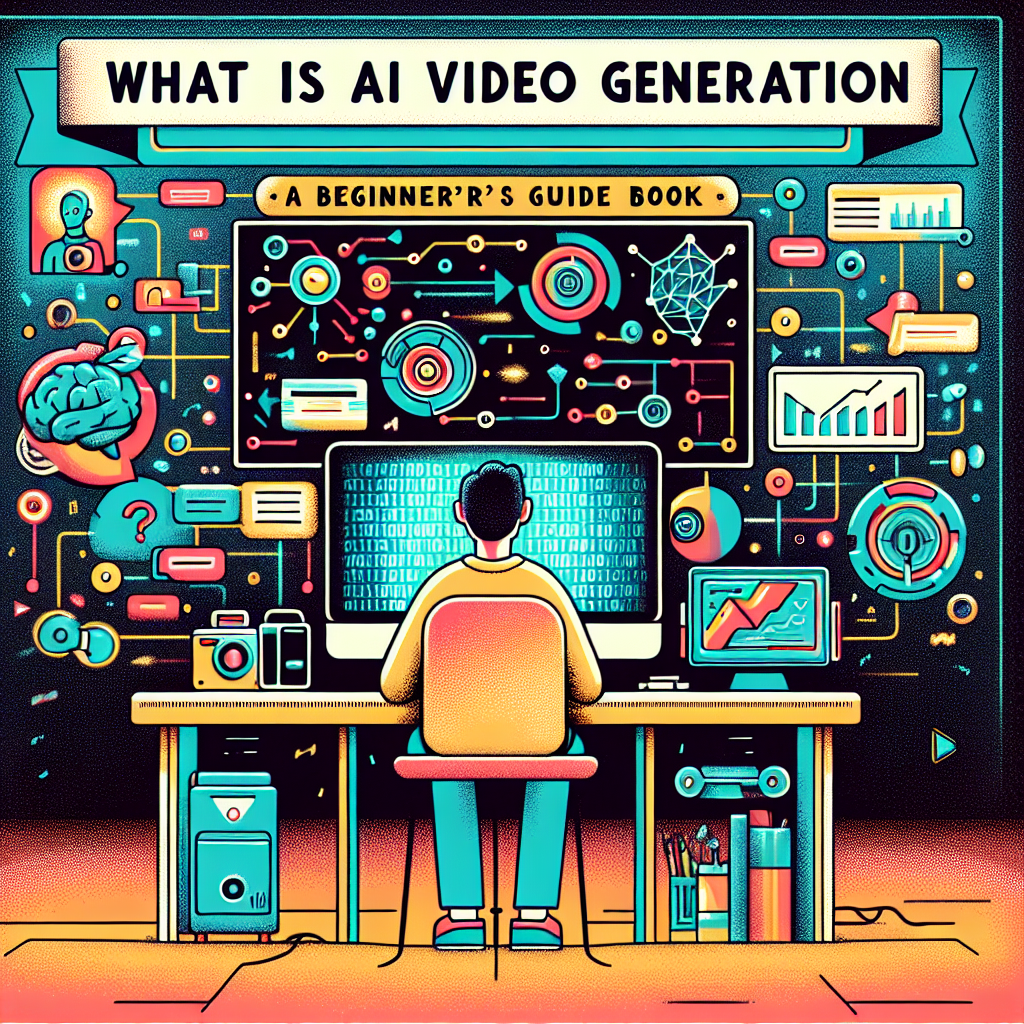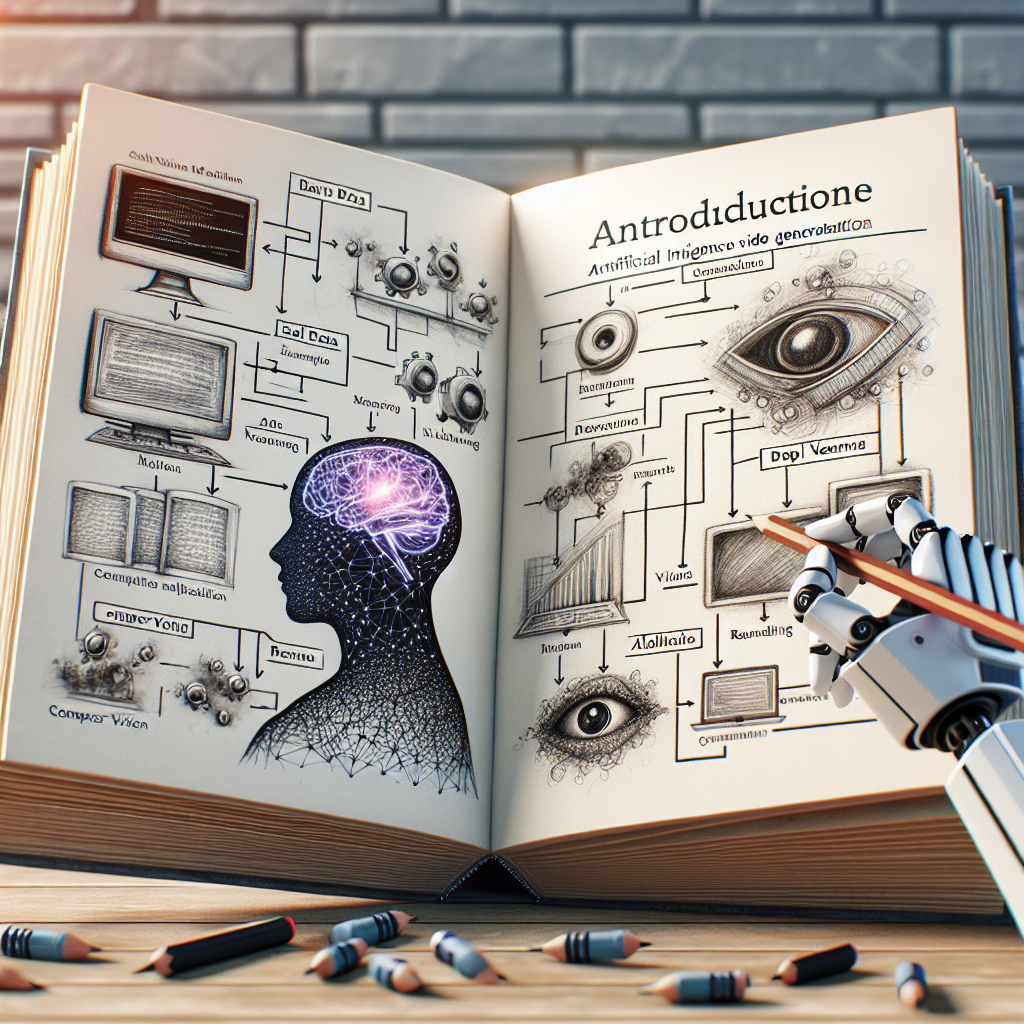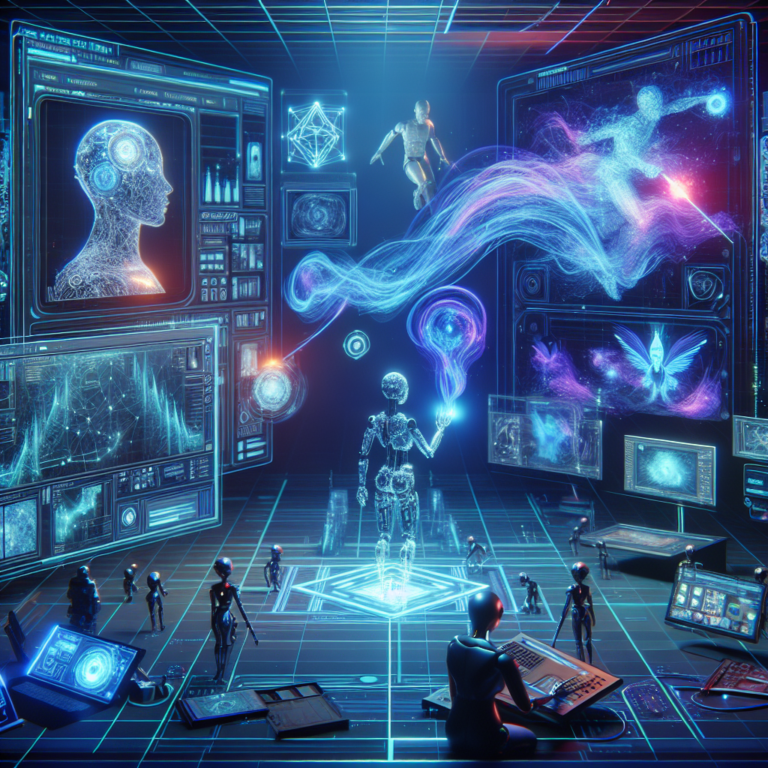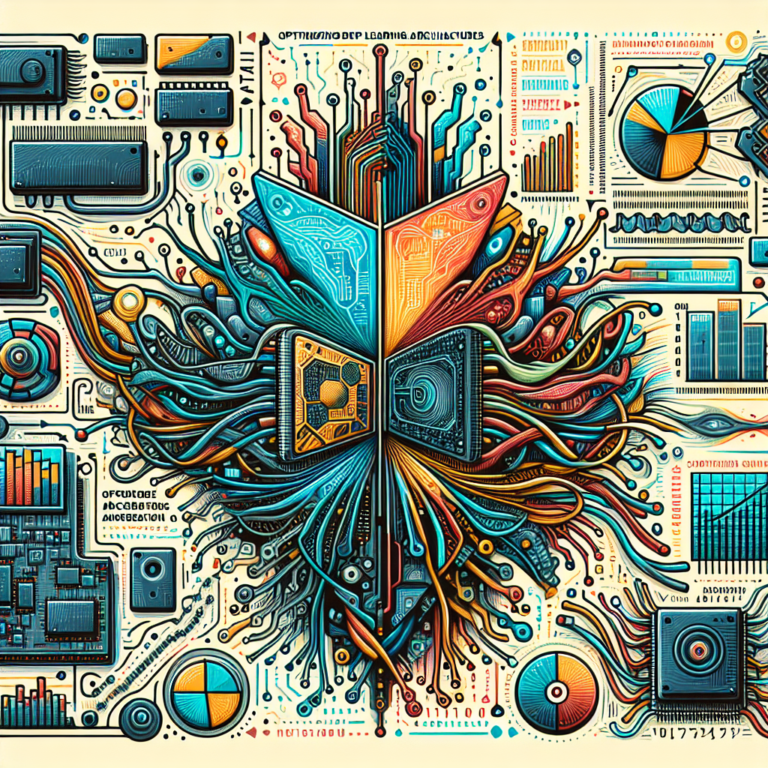What Is AI Video Generation? A Beginner’s Guide to the Technology Behind It
Understanding AI Video Generation: Key Concepts and Terminology
AI video generation is an innovative technology that leverages artificial intelligence to create, modify, or enhance video content. This burgeoning field is transforming the way we produce and consume visual media, offering new possibilities for creativity and efficiency. To understand AI video generation, it is essential to familiarize oneself with the key concepts and terminology that underpin this technology.
At the core of AI video generation is the concept of machine learning, a subset of artificial intelligence that enables computers to learn from data and make decisions without explicit programming. Machine learning algorithms analyze vast amounts of video data to identify patterns and features, which they then use to generate new video content. This process often involves deep learning, a more advanced form of machine learning that uses neural networks to mimic the human brain’s structure and function. Neural networks consist of layers of interconnected nodes, or “neurons,” that process information and learn to recognize complex patterns.
One of the most significant advancements in AI video generation is the development of Generative Adversarial Networks (GANs). GANs consist of two neural networks: a generator and a discriminator. The generator creates new video content, while the discriminator evaluates its authenticity by comparing it to real video data. Through this adversarial process, the generator improves its ability to produce realistic video content over time. GANs have been instrumental in creating deepfakes, which are hyper-realistic videos that manipulate existing footage to alter appearances or actions.
Another important concept in AI video generation is computer vision, which enables machines to interpret and understand visual information from the world. Computer vision algorithms analyze video frames to detect objects, track movements, and recognize faces, among other tasks. This capability is crucial for applications such as video editing, where AI can automatically identify and isolate specific elements within a scene for modification or enhancement.
In addition to these foundational concepts, AI video generation relies on various techniques to achieve its goals. Style transfer, for example, is a technique that applies the visual style of one video or image to another, allowing creators to experiment with different aesthetics. Motion capture, on the other hand, involves recording the movements of real-world objects or people and using AI to replicate those movements in digital characters or environments. These techniques, combined with the power of AI, enable the creation of highly realistic and visually compelling video content.
As AI video generation continues to evolve, it is important to consider the ethical implications of this technology. The ability to create convincing deepfakes raises concerns about misinformation and privacy, as these videos can be used to spread false information or impersonate individuals without their consent. Consequently, there is a growing need for regulations and guidelines to ensure the responsible use of AI video generation.
In conclusion, AI video generation is a rapidly advancing field that combines machine learning, deep learning, and computer vision to create and enhance video content. By understanding the key concepts and terminology associated with this technology, one can better appreciate its potential and the challenges it presents. As AI video generation becomes more prevalent, it will undoubtedly continue to shape the future of visual media, offering exciting opportunities for innovation while also necessitating careful consideration of its ethical implications.
The Technology Behind AI Video Generation: Tools and Techniques

AI video generation is a rapidly evolving field that leverages advanced technologies to create, modify, and enhance video content. At its core, this technology utilizes artificial intelligence and machine learning algorithms to automate the video production process, making it more efficient and accessible. The tools and techniques behind AI video generation are diverse, encompassing a range of methodologies that work in tandem to produce high-quality video content.
One of the fundamental technologies in AI video generation is deep learning, a subset of machine learning that mimics the human brain’s neural networks. Deep learning models, particularly convolutional neural networks (CNNs) and recurrent neural networks (RNNs), are instrumental in analyzing and processing video data. These models can identify patterns, recognize objects, and even predict future frames in a video sequence, enabling the creation of realistic and coherent video content.
In addition to deep learning, generative adversarial networks (GANs) play a crucial role in AI video generation. GANs consist of two neural networks: a generator and a discriminator. The generator creates video content, while the discriminator evaluates its authenticity. Through this adversarial process, GANs can produce highly realistic videos by continuously refining the output until it is indistinguishable from real footage. This technique is particularly useful in applications such as deepfake technology, where AI is used to superimpose one person’s likeness onto another’s body in a video.
Another significant tool in AI video generation is natural language processing (NLP). NLP enables the conversion of text-based scripts into video content by understanding and interpreting human language. This capability allows for the automatic generation of video narratives, where AI systems can create video scenes based on written descriptions. By integrating NLP with video generation algorithms, creators can produce videos that align closely with the intended storyline or message.
Moreover, AI video generation often involves the use of computer vision, a field that enables machines to interpret and understand visual information. Computer vision techniques are essential for tasks such as object detection, motion tracking, and scene reconstruction. These capabilities allow AI systems to manipulate video content intelligently, such as by adding or removing objects, altering backgrounds, or enhancing visual effects.
Transitioning from the technical aspects, it is important to consider the practical applications of AI video generation. This technology is revolutionizing industries such as entertainment, marketing, and education. In the entertainment sector, AI-generated videos are used to create special effects, animate characters, and even produce entire films. In marketing, businesses leverage AI to create personalized video advertisements that resonate with target audiences. Educational institutions use AI-generated videos to develop interactive and engaging learning materials, enhancing the educational experience for students.
Despite its numerous advantages, AI video generation also presents challenges and ethical considerations. The potential for misuse, particularly in the creation of deepfakes, raises concerns about privacy, consent, and misinformation. As the technology continues to advance, it is crucial for developers, policymakers, and society at large to address these issues and establish guidelines that ensure responsible use.
In conclusion, AI video generation is a transformative technology that combines deep learning, GANs, NLP, and computer vision to automate and enhance video production. Its applications are vast and varied, offering new possibilities across multiple industries. However, as with any powerful technology, it is essential to navigate its challenges thoughtfully to harness its full potential responsibly.
Applications and Benefits of AI Video Generation in Various Industries
AI video generation is a transformative technology that is rapidly gaining traction across various industries, offering a plethora of applications and benefits. At its core, AI video generation involves the use of artificial intelligence algorithms to create, edit, or enhance video content. This technology leverages machine learning models, often trained on vast datasets, to produce videos that can range from simple animations to complex, realistic scenes. As industries continue to explore the potential of AI video generation, its applications are becoming increasingly diverse and impactful.
One of the most prominent applications of AI video generation is in the entertainment industry. Filmmakers and content creators are utilizing AI to streamline the production process, reduce costs, and enhance creativity. For instance, AI can be used to generate realistic visual effects, create digital characters, or even produce entire scenes without the need for physical sets or actors. This not only accelerates the production timeline but also opens up new creative possibilities that were previously constrained by budget or technical limitations. Moreover, AI-generated videos can be tailored to specific audiences, allowing for personalized content that enhances viewer engagement.
In addition to entertainment, the advertising industry is also reaping the benefits of AI video generation. Advertisers can create dynamic and personalized video ads that resonate with individual consumers. By analyzing user data, AI can generate video content that aligns with a viewer’s preferences, increasing the likelihood of engagement and conversion. This level of personalization was once a daunting task, but AI video generation makes it feasible and efficient. Furthermore, AI can optimize video content for different platforms, ensuring that ads are effective across various digital channels.
The educational sector is another area where AI video generation is making significant strides. Educators and institutions are leveraging AI to create interactive and immersive learning experiences. For example, AI can generate educational videos that adapt to a student’s learning pace, providing personalized instruction that enhances comprehension and retention. Additionally, AI-generated simulations and virtual environments can offer students hands-on experiences that are otherwise difficult to replicate in a traditional classroom setting. This not only enriches the learning experience but also makes education more accessible to a broader audience.
Healthcare is yet another industry benefiting from AI video generation. Medical professionals can use AI-generated videos for training and simulation purposes, allowing them to practice procedures in a risk-free environment. These videos can also be used to educate patients, providing them with clear and concise information about medical conditions and treatments. By enhancing both training and patient education, AI video generation contributes to improved healthcare outcomes.
Moreover, AI video generation is proving to be a valuable tool in the field of journalism and media. News organizations can use AI to quickly generate video content that covers breaking news or complex stories, providing audiences with timely and informative updates. AI can also assist in fact-checking and verifying video content, ensuring that the information presented is accurate and reliable.
In conclusion, AI video generation is a versatile technology with applications that span multiple industries. Its ability to create personalized, efficient, and innovative video content offers numerous benefits, from enhancing creativity in entertainment to improving education and healthcare outcomes. As AI technology continues to evolve, its impact on video generation is likely to expand, offering even more opportunities for industries to harness its potential.


